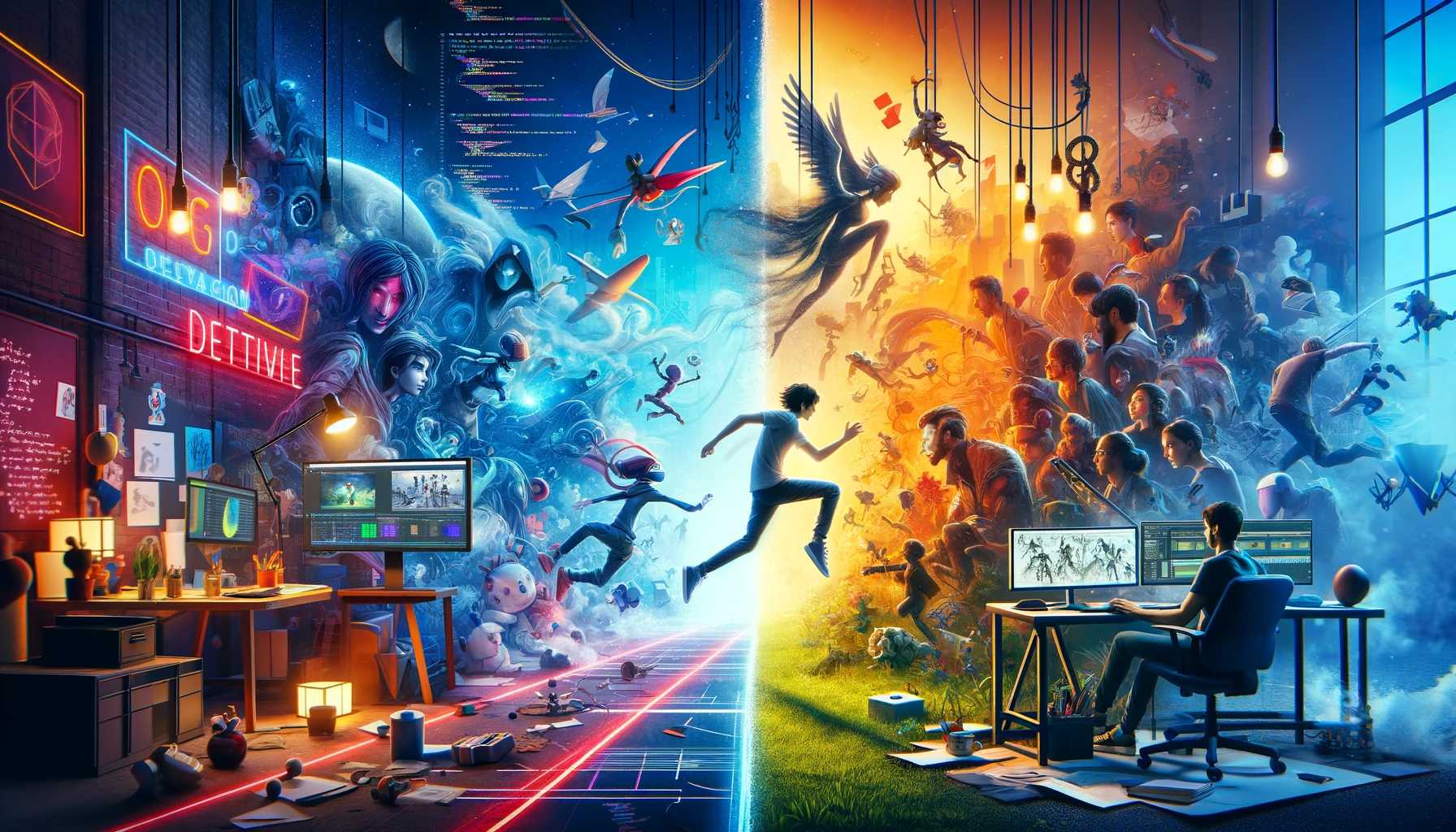Animation is a mesmerizing art form that captivates audiences across the globe, whether it's in the form of movies or video games. Both mediums employ animation to tell compelling stories, evoke emotions, and transport viewers to fantastical worlds. However, the process of creating animation for games differs significantly from animation for movies. Let's delve into the intricacies of each and explore the unique challenges and opportunities they present.
The Essence of Animation
At its core, animation is the art of bringing inanimate objects and characters to life through movement. It's a painstaking process that requires meticulous attention to detail, timing, and expression to convey emotion and personality effectively. Whether it's the fluid movements of a character in a movie or the responsive actions of a player-controlled avatar in a game, animation serves as a vital tool for storytelling and immersion.
Animation for Movies: Crafting Cinematic Masterpieces
Animation has been a cornerstone of filmmaking since the early days of cinema, with pioneers like Walt Disney revolutionizing the industry with timeless classics such as "Snow White and the Seven Dwarfs" and "Fantasia." In movies, animation is used to create fully realized worlds, characters, and narratives that transcend the constraints of live-action filmmaking.
One of the defining characteristics of animation for movies is its focus on visual storytelling. Filmmakers have complete control over every frame, allowing them to craft meticulously composed shots, stunning visual effects, and seamless transitions between scenes. From hand-drawn animation to computer-generated imagery (CGI), the possibilities for creative expression are virtually limitless.
Moreover, animation in movies often prioritizes realism and cinematic spectacle, striving to create immersive experiences that transport viewers to imaginary realms and evoke a wide range of emotions. Whether it's the breathtaking landscapes of a Pixar film or the lifelike characters of a DreamWorks production, animation for movies aims to blur the line between fantasy and reality.
Animation for Games: Interactivity and Immersion
Animation in games serves a different purpose than animation in movies, as it must accommodate player interaction and real-time gameplay mechanics. Unlike movies, where the viewer is a passive observer, players actively participate in shaping the narrative and controlling the actions of their characters.
One of the key challenges of animation for games is balancing responsiveness with realism. Game animations must not only look aesthetically pleasing but also feel intuitive and responsive to player inputs. Whether it's the fluid combat animations of a action-adventure game or the expressive facial animations of a narrative-driven RPG, animators must strike a delicate balance between visual fidelity and gameplay functionality.
Another distinguishing feature of animation for games is its modular nature. Unlike movies, which are typically linear and pre-rendered, games are interactive experiences that unfold in real time. This means that animations must be broken down into smaller, reusable components known as animation states, allowing for seamless transitions between different actions and scenarios.
Furthermore, animation in games often relies heavily on procedural techniques and motion capture technology to streamline the production process and achieve lifelike movement. By capturing the movements of real actors and translating them into digital characters, animators can imbue games with a sense of realism and authenticity that enhances the player experience.
Bridging the Divide: Convergence and Collaboration
While animation for movies and animation for games may seem like two distinct disciplines, there is an increasing convergence between the two mediums. With advancements in technology and storytelling techniques, filmmakers and game developers are finding new ways to collaborate and share insights, blurring the lines between traditional filmmaking and interactive entertainment.
For example, many video game adaptations of popular movies leverage the assets and animation techniques used in the original film to create immersive gaming experiences that resonate with fans. Similarly, animated movies based on video games often incorporate interactive elements and game-like mechanics to engage audiences in new and innovative ways.
Moreover, animation is increasingly being used as a storytelling tool in virtual reality (VR) experiences and augmented reality (AR) applications, bridging the gap between traditional media and emerging technologies. Whether it's exploring immersive 3D environments or interacting with digital characters in real-world settings, animation continues to push the boundaries of creative expression and technological innovation.
Conclusion: Celebrating the Art of Animation
In conclusion, animation is a versatile and powerful medium that transcends the boundaries of traditional storytelling. Whether it's in the form of movies or games, animation has the power to inspire, entertain, and move audiences in profound ways. While animation for movies and animation for games may have their own unique challenges and opportunities, they both share a common goal: to create unforgettable experiences that resonate with audiences for generations to come.
So, whether you're a filmmaker crafting a cinematic masterpiece or a game developer shaping an interactive adventure, remember the magic of animation and the limitless possibilities it holds. For in the hands of skilled animators and storytellers, anything is possible – from soaring through the skies on the back of a dragon to embarking on an epic quest to save the world. Let's celebrate the art of animation and the boundless creativity it inspires.
